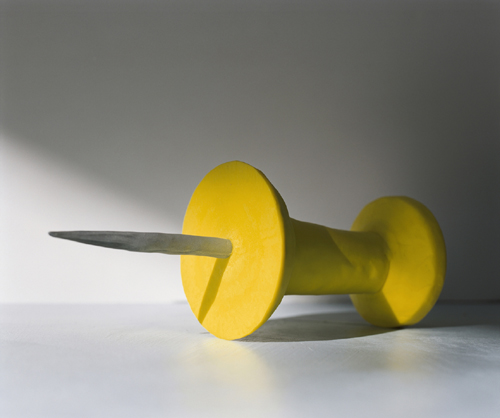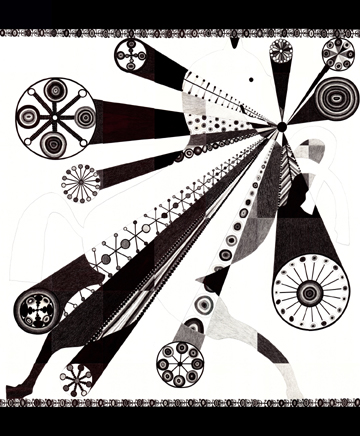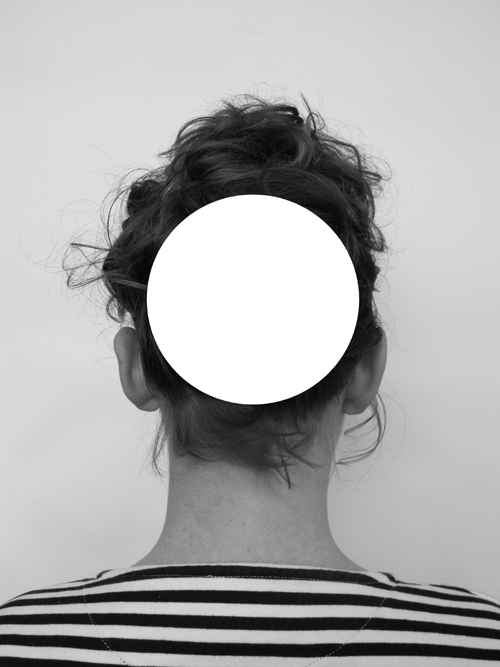Concrete Playground talks with Primavera 2010 artists
Rachel Fuller uncovers the artists behind this years' Primavera.
Primavera comes but once a year. It is generally heralded with the weight of being a tremendous launching pad for Australia's young and emerging artists. With this also comes the usual art world bitching and whispering about so-and-so being 'flavour of the month' or 'emerging? I don't think so.' In 2010, Katie Dyer of the National Art School has taken over the curating reins and as Primavera artist, Emma White tells me, 'I think Katie wanted to include people who had been just plugging away, rather than the fresh new art star straight from art school. I think she wanted to highlight the work of people that she thinks have been progressing well over time and have a commitment to their type of craft.'
By its very nature, Primavera can easily slip into a sprawling, art-prize-like mess. Disparate works from all over the country with no history or background to ground. Yet, in her decision to focus on the young 'plugger', Dyer appears to have created an exhibition ripe for exploration and engagement. The plugger has a history. The plugger keeps on chugging, ups and downs are part and parcel and as a result, slowly but surely he or she evolves, betters and becomes. The plugger has a story to tell and this, I hope, will be more than evident in this year's Primavera.
Over the past few weeks, I have caught up with the artists involved in this years Primavera. With one question each – oh, so little space! – I hope you can begin to understand something of these artists and their work before you pop down to the MCA next week.
EMMA WHITE
Could you tell us about one of the new works you will be exhibiting at Primavera?
One work is about painting, or about being a painter, or wanting to be a painter, or planning to try painting which I have been planning for nearly three years. Painting is just such a hard thing to come at, because it is so big. And I feel like I don't have the discourse. I wasn't a part of painting at art school. You know, in art, its like, as my Mum would say, it's art-art. She'd say, "Is it art art? Or photography art?" Ooooh, what does that mean?! Anyway, she hasn't said that for a while. She said, "Oh, I didn't mean anything by that," when she said that. But its true, painting is like, if you want to be a super successful artist you would be a painter. If you want to make money as an artist, be a painter. And if you want to do art that fits really comfortably into the trajectory of what people think art is and have thought it is over years, then that is painting. So, I guess, another thing is that because I have been working with the polymer clay for a while I keep wanting to make abstract work with it but it is another thing that I don't really have a history working with, and I don't really know how to come at. There is something about the way that that material [polymer clay] relates to paint, they are both synthetic, chromatic, polymer things and I do a lot of colour mixing and stuff so I just thought I'll do some. So I guess I am bringing in the desire to do painting and the desire to do something abstract with the materials that I am working with, and my interest in ideas about how people work and how do you work through an idea with stuff? Rather than what the idea is, the process is important.
JACKSON SLATTERY
How were you approached to be a part of Primavera?
I suspect my inclusion in Primavera had a lot to do with a recommendation from artist Richard Lewer. Katie Dyer and Richard had worked closely on several projects together in the past and he mentioned to Katie that I might be worth considering for the show. Richard and I met whilst we were residents at Gertrude Contemporary and I've been lucky enough to be in a few group shows with him over the past couple of years. So Katie came down to Melbourne and met with a shortlist of artists that she was considering, one of which was me. She seemed to get my practice straight away so the interview felt more like a lively discussion.
JULIE FRAGAR
Tell us about being an artist in Brisbane and what the art community is like up there? How does it differ from your experience of being an artist in Sydney?
It took me a while to come to terms with Brisbane, it really is its own culture. The arts community is very small, but all art communities in Australia feel small. Brisbane has a vitality coupled with relaxedness that I appreciate. I don't know that being in Brisbane has changed the work I make particularly, except that it allows me (financially) to make work more easily. I am lucky to teach at the Queensland College of Art which I love, and still spend a good portion of my week in the studio. I guess being here just feels easier (in some ways – if not all).
AKIRA AKIRA
How do you feel about the opportunity to be a part of Primavera? In turn, how do you feel about the term, emerging artist?
If I remember correctly from what I've heard before, I couldn't have been in Primavera unless I was an Australian citizen or permanent resident. I got my permanent residency in January this year so to be in Primavera 2010 means a lot to me - a lot. It's taken a long time and lot of hard work to get to this point.
In terms of being an emerging artist, I'm happy to be one as long as I won't disappear into the darkness afterwards! You gotta go somewhere if you have once emerged, haven't you?
ALASDAIR McLUCKIE
How did you go about deciding what works - past or present - to exhibit in Primavera?
The process of deciding what to put in the show was pretty easy, Katie and I just had a conversation regarding what we were both thinking, which was basically the same thing.
As well as the Highest Mountain Peak work I'm showing a new body of work, which is sort of a reaction to the Mountain Peak, or at least an odd catalyst for the new work. There will be an interestingly strange conversation between the two very different yet very similar bodies of work.
JAMES NEWITT
Could you describe the process involved in producing your work?
Its hard to say how I go about making art because I'm still working it out myself. Sometimes a project starts with an idea, sometimes it starts with a story, sometimes it starts with something quite difficult to identify (like an emotion or atmosphere I want to explore). From the initial idea, I undertake research to develop the work and understand how I might approach the concept. Sometimes the research could continue for over a year or two, depending on the scope of the project. Often the material I collect during the research stage will feed into the artwork - sometimes I'm not sure where the research stops and the art begins. If I'm filming something performed or facilitated, I'll need to work hard to set everything up perfectly because I might only have a day or two to film. If I'm filming something which is more observational (like much of the footage in Unstable Ground) then I might film for up to 12 months to get the shots I want. Sometimes there can be pressure to make the work a certain way – some of the people who helped me in Saturday Nights wanted a 2-hour video of the whole country dance. It's important that I have time and space to think about what I want the work to be and the best way of communicating my ideas.
AGATHA GOTHE-SNAPE
You have been included in two institutional 'emerging' exhibitions this year, firstly NEW at ACCA in Melbourne and now Primavera at the MCA. Could you talk about the simularities and differences between the two shows?
I think they are very different shows and for me; have been very different experiences. Mostly the difference is just about time, as although the shows have been only four months apart, in that time I have matured that much again as an artist. And [I have matured] directly because of being in NEW and dealing with that and showing in a big institution and you know, having to have a relationship with that institution and presenting your work on that scale.
Since NEW all the fictions around artists – about who is successful and who isn't – have been really highlighted. I've really seen the mechanisms of the art world very clearly and I think my work at NEW was really responding to that. Okay, if I have to face the challenge of being in this huge institution and deal with the ramifications of showing in this physical architectural space and also the cultural weight of showing somewhere like this and the expectations placed on the artist, the only thing I can respond to is all those expectations and restrictions. So my work was driven by working through all those anxieties and feelings about those things. And I really wanted it to, in some way, critique on a very emotional level what it is for a young artist to show in that space. I really hate the professionalisation of being an emerging artist and on every front I always want to critique the structures that are making us believe that we do need to present ourselves in a certain way, or have a sense a professionalism, or have a website, or be really good at applying for grants and know how to talk about our work in a sentence. I think that is always underlying the work and at NEW it really became the driver.
Primavera opens on Thursday August 19 and continues until November 21, 2010.
Entry is free. Museum of Contemporary Art, Sydney













